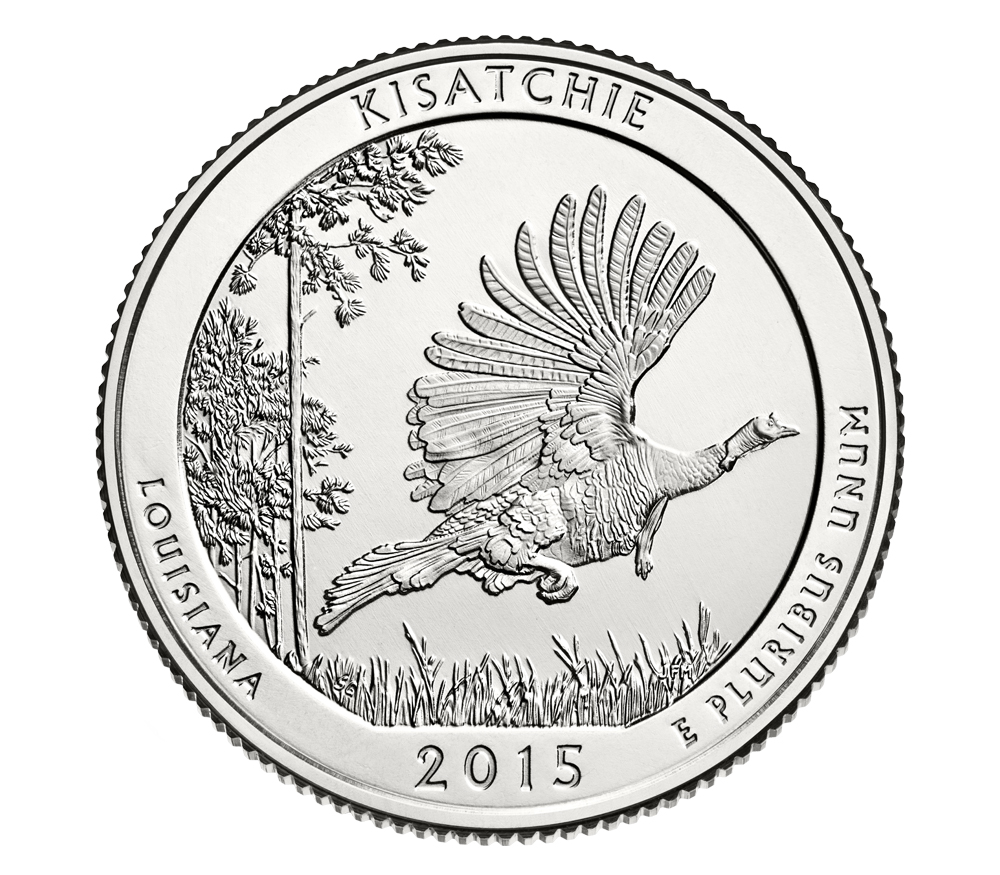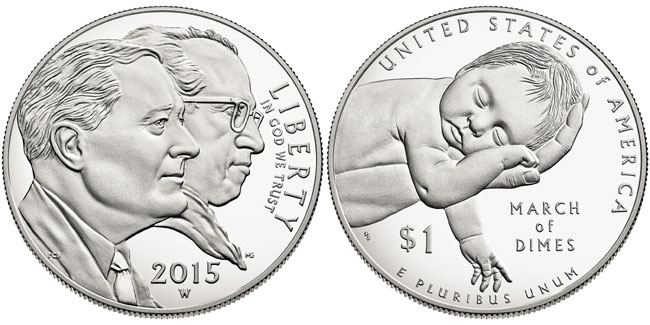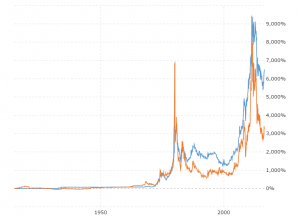U.S. Mint Wins Two Big Prizes
Recognition of the quality of Federal Mint designs continues to grow. The 46th annual World Money Fair was just held, from the 3rd to the 5th of February, 2017 at the Estrel Convention Center in Berlin, Germany. Officials from the United States Mint were there to accept two Coin of the Year Awards (COTY) given to designs for recently issued coins.
The first award was in the category Best Circulating Coin, awarded for a quarter in the America the Beautiful Program. The coin design celebrated Kisatchie National Forest, the only National Forest in the state of Louisiana. The forest was designated in 1930 by President Edgar Hoover, chiefly because of campaigning by the botanist and conservationist “Carrie” Dormon, who lived in Arcadia, Lousiana. The forest is chiefly pine, and the reverse side of the coin design features a wild turkey flying over bluestem grass with long-leaf pines, Pinus palustris, in the background.
This prize-winning design was created by Susan Gamble, who was a part of the Mint’s Artistic Infusion Program (AIP) from 2004 until her death in 2015. This program was set up to improve the quality of the designs of the Mint’s coins, and clearly it has been successful. Joseph Menna, who has been a Sculptor-engraver with the Mint since 2005, created the actual die used to mint the coin. This is the second COTY award for a coin in the America the Beautiful Program. The 2013 Mount Rushmore National Memorial coin had already won the same award three years ago. The America the Beautiful series began in 2010, and each year five coins celebrating American National Parks are released. Eventually coins will be released for parks in all 50 states, plus D.C. and the five overseas territories.
The second award was in the category, Most Inspirational Coin, for a silver dollar commemorating the 75th anniversary of the March of Dimes Foundation. The reverse was both designed and sculpted by sculptor-engraver Don Everhart. He has worked at the Mint since 2004. On the obverse are the profiles of President Franklin D. Roosevelt and of Dr. Jonas Salk. FDR was crippled by polio at the age of 39, but it did not stop him going on to be a great president and the leader of America during WWII. Dr. Salk developed a vaccine for the virus, which he released in 1955. The vaccination of children since then has reduced the incidence of this crippling disease by 97%. Both men are indeed inspiration in overcoming literally crippling odds.
Another member of the AIP since 2010, Paul Balan, designed the coin, and the die was made by the Mint sculptor-engraver Michael Gaudioso. The mint had previously also won the Most Popular Coin Award in 2009 for the George Washington one dollar alloyed copper coin. These awards validate the Mint’s decision to create the AIP, and they are another credit to the artistic quality and collectability of the designs created by the Mint for their various issues. More awards are bound to follow these ones, and each one gives the awarded coins additional cachet and value among collectors.











Chris B.’s article on the U.S. Mint winning two prizes at the World Money Fair in Berlin was of interest to me. However, it should be noted that President Hoover’s first name was HERBERT, not Edgar. Perhaps Mr. B. has the president confused with J. Edgar Hoover, former Director of the FBI for many years.